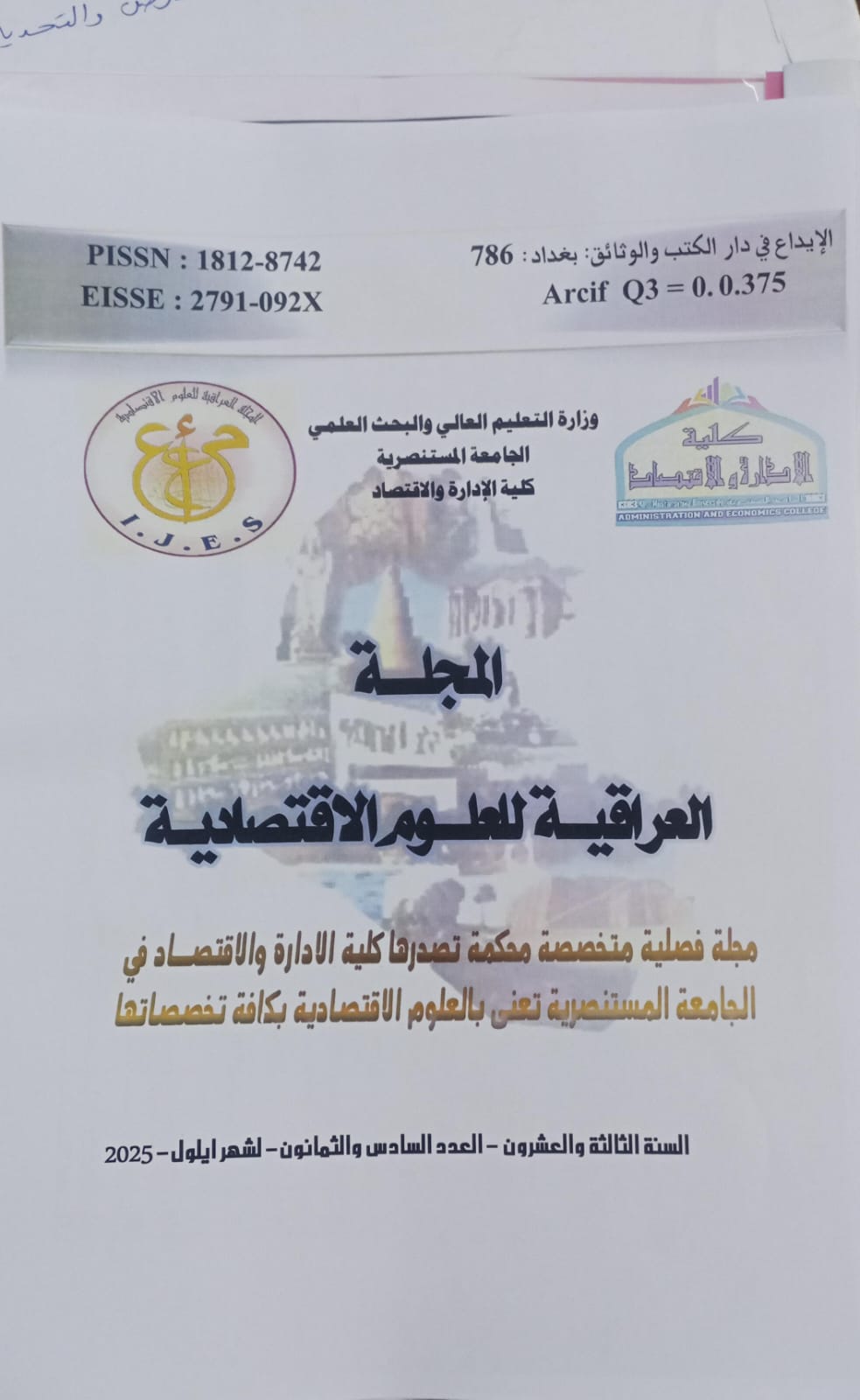Abstract
The research aims to study the relationship between environmental policies and economic policies in the face of oil price fluctuations when exposed to market shocks, and the research tries to characterize the relationship between economic policies and environmental policies required to mitigate their damage and maintain stability and economic growth in the long term. The results showed that the adoption of adaptive economic policies, such as lowering interest rates and following loose monetary policies in crises, can alleviate crises and contribute to the temporary stabilization of economies affected by oil price fluctuations. At the same time, it is possible to shift towards investing in renewable energy and environmental technology as an effective tool for diversifying sources of national income and Budget and reducing excessive dependence on oil revenues, which will lead to strengthening economic and environmental sustainability in the long term. The research also points to the importance of structural reforms in improving financial transparency and creating an economic environment supportive of innovation and improving production efficiency to stimulate sustainable economic growth and create jobs in the green energy and environmental technology sectors. The results have shown that adaptive economic policies and loose monetary policy, such as lowering interest rates structural reforms that include improving financial transparency, creating an economic environment supportive of innovation, improving production efficiency, investing in green renewable energy sectors and environmental technology as an effective tool for diversifying sources of national income contributed to mitigating the shocks of economic activity affected by oil price fluctuations and reducing excessive dependence on oil revenues, leading to enhanced economic and environmental sustainability in the long term.
Keywords
economic and environmental policies
environmental impacts
oil countries
oil price fluctuations
Abstract
يهدف البحث إلى دراسة العلاقة بين السياسات البيئية والسياسات الاقتصادية في مواجهة تقلبات أسعار النفط عند التعرض للصدمات السوقية، وحاول البحث توصيف العلاقة بين السياسات الاقتصادية والسياسات البيئية المطلوبة للتخفيف من أضرارها والمحافظة على الاستقرار والنمو الاقتصادي على المدى البعيد. وأظهرت النتائج أن تبني السياسات الاقتصادية التكيفية، مثل خفض أسعار الفائدة واتباع السياسات النقدية المخففة في الأزمات، يمكن أن يخفف من الأزمات ويسهم في تحقيق استقرار مؤقت للاقتصادات المتأثرة بتقلبات أسعار النفط. وفي الوقت نفسه يمكن التحول باتجاه الاستثمار في الطاقة المتجددة والتكنولوجيا البيئية كأداة فعالة لتنويع مصادر الدخل الوطني والميزانية والحد من الاعتماد المفرط على عائدات النفط، مما يؤدي إلى تعزيز الاستدامة الاقتصادية والبيئية على المدى الطويل. كما يشير البحث إلى أهمية الإصلاحات الهيكلية في تحسين الشفافية المالية وخلق بيئة اقتصادية داعمة للابتكار وتحسين الكفاءة الإنتاجية لتحفيز النمو الاقتصادي المستدام وخلق فرص عمل في قطاعات الطاقة الخضراء والتكنولوجيا البيئية. وقد أظهرت النتائج أن السياسات الاقتصادية التكيفية والسياسة النقدية المخففة، مثل خفض أسعار الفائدة والإصلاحات الهيكلية التي تشمل تحسين الشفافية المالية
وخلق بيئة اقتصادية داعمة للابتكار وتحسين الكفاءة الإنتاجية والاستثمار في قطاعات الطاقة الخضراء المتجددة والتكنولوجيا البيئية كأداة فعالة لتنويع مصادر الدخل الوطني اسهمت في التخفيف من صدمات النشاط الاقتصادي المتأثر بتقلبات أسعار النفط والحد من الاعتماد المفرط على عائدات النفط، مما يؤدي إلى تعزيز الاستدامة الاقتصادية والبيئية على المدى الطويل.
وخلق بيئة اقتصادية داعمة للابتكار وتحسين الكفاءة الإنتاجية والاستثمار في قطاعات الطاقة الخضراء المتجددة والتكنولوجيا البيئية كأداة فعالة لتنويع مصادر الدخل الوطني اسهمت في التخفيف من صدمات النشاط الاقتصادي المتأثر بتقلبات أسعار النفط والحد من الاعتماد المفرط على عائدات النفط، مما يؤدي إلى تعزيز الاستدامة الاقتصادية والبيئية على المدى الطويل.
Keywords
الدول النفطية، تقلبات اسعار النفط، السياسات الاقتصادية والبيئية المطلوبة، الاثار البيئية
